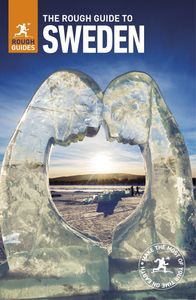The Domkyrkan
The obvious place to begin your exploration is the magnificent Domkyrkan, Lund's crowning glory. One of the world's finest masterpieces of Romanesque architecture, the cathedral is built of storm-cloud charcoal and white stone, giving it an imposing monochrome appearance. Before going inside, have a look round the back of the building; on the way there, you’ll notice the grotesque animal and bird gargoyles over the side entrances, their features blunted by eight centuries of weathering. At the very back, the most beautiful part of the exterior, the three-storey apse above the crypt, is revealed, crowned with an exquisite gallery.
The interior
The majestic interior is surprisingly unadorned, an elegant mass of watery-grey ribbed stone arches and stone-flagged flooring. One of the world’s finest masterpieces of Romanesque architecture, the cathedral was built in the twelfth century when Lund became the first independent archbishopric in Scandinavia, laying the foundation for a period of wealth and eminence that lasted until the advent of Protestantism. There are several striking features, such as the elaborately carved fourteenth-century choir stalls depicting Old Testament scenes, and the grotesque carvings hidden beneath the seats. The most vividly coloured feature is just to the left of the entrance, an amazing astronomical clock dating from the 1440s, which shows hours, days, weeks and the courses of the sun and moon in the zodiac. Each day at noon and 3pm, the clock also reveals its ecclesiastical Punch-and-Judy show, as two knights pop out and clash swords as many times as the clock strikes, followed by little mechanical doors opening to trumpet-blowing heralds and the Three Wise Men trundling slowly to the Virgin Mary.
The crypt
The dimly lit and dramatic crypt beneath the apse has been left almost untouched since the twelfth century, and should not be missed. Here, the thick smattering of what look like tombstones is really comprised of memorial slabs, brought down to the crypt from just above; but there is one actual tomb – that of Birger Gunnarsson, Lund’s last archbishop. A short man from a poor family, Gunnarsson chose the principal altar-facing position for his tomb, dictating that his stone effigy above it should be tall and regal. Two pillars here are gripped by stone figures – one of a man, another of a woman and child. Local legend has it that Finn the Giant built the cathedral for St Lawrence; in return, unless the saint could guess his name, Finn wanted the sun, the moon or the saint’s eyes. Lawrence was just preparing to end his days in blindness when he heard Finn’s wife boasting to her baby, “Soon Father Finn will bring some eyes for you to play with.” The relieved saint rushed to Finn declaring the name. The livid giant, his wife and child rushed to the crypt to pull down the columns, and were instantly turned to stone. Even without the fable, the column-hugging figures are fascinating to view.
Lund orientation
Lund is a wonderful town to wander around, its cobbled streets festooned with climbing roses. To help get your bearings, it’s worth noting that the main thoroughfare changes its name several times. In the centre, it’s called Kyrkogatan; to the north, Bredgatan (there’s no need to venture further north than the pretty old brick house at no. 16); to the south, Stora Södergatan. Lundagård (the city’s academic heart), the Domkyrkan and Stortorget are all along this route. Lund’s crowning glory is its cathedral; just 100m north of Stortorget, and only a short walk east from the station, it is the obvious place to begin your exploration.




















